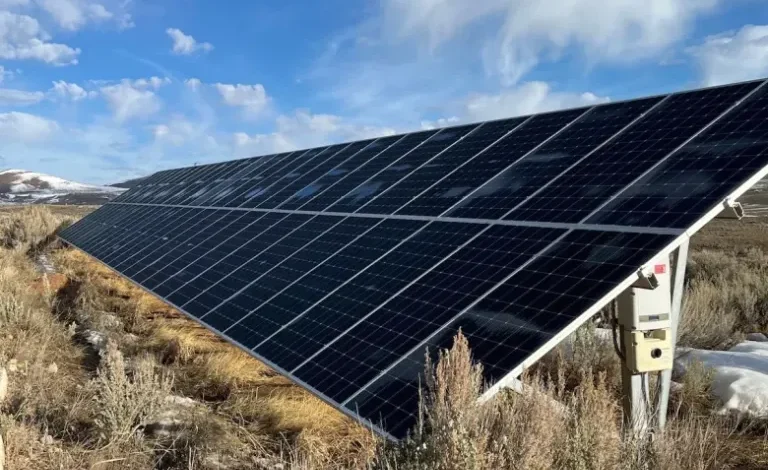Wyoming Electricity Rates Could Rise Amid Federal Energy Policy Shift, Experts Say

As President Donald Trump’s newly signed One Big Beautiful Bill Act takes effect, energy experts and advocates are raising concerns about how the sweeping legislation could impact Wyoming’s electricity rates, energy economy, and future power generation options, Buckrail reports.
The bill, signed into law on July 4, includes provisions that accelerate the phaseout of federal tax credits for wind and solar energy — specifically the 45Y and 48E production and investment credits. While some state and federal leaders argue the bill will bolster affordable fossil fuel and nuclear energy production, others warn it could lead to significantly higher energy costs, particularly in states like Wyoming.
Wyoming Republican Sen. John Barrasso, a supporter of the bill, described it as a win for consumers and energy producers alike.
“This legislation will unleash affordable, available, reliable Wyoming energy,” Barrasso said earlier this week.
But critics — including consumer groups and renewable energy proponents — argue that by limiting support for renewable energy, the bill could restrict power supply options and drive up costs at a time when demand for electricity is rapidly growing.
The Clean Energy Buyers Association, which represents major corporations including Microsoft, Amazon, and Google, warned in a June analysis that electricity costs in Wyoming could rise by an average of 29% as a result of the bill — the largest projected increase in the country. The group attributes the potential rise to the removal of incentives that have helped make wind and solar energy cost-competitive.
“There is no question that removing tech-neutral energy credits would cause economic harm and job losses and drive up electricity prices in more than half the country,” the association’s CEO, Rich Powell, said in a statement.
Wyoming’s average household currently pays about $105 per month for electricity, which is below the national average of $135, according to federal data.
While Wyoming remains a stronghold for fossil fuel production, the state has also seen rapid growth in renewable energy — particularly wind power. According to the US Energy Information Administration, wind energy now makes up more than 21% of the state’s electricity generation, more than double its share since 2019.
Jonathan Naughton, director of the Wind Energy Research Center at the University of Wyoming, said that wind, solar, and battery storage remain the fastest and most scalable solutions to meet future electricity needs. He noted that with increasing pressure from industrial power demands — especially from AI-related computing infrastructure — utilities are under growing pressure to add new power sources quickly.
“If you take a look at what could be built and installed today, it’s wind, solar, and [energy] storage,” Naughton said. “Adding more nuclear power takes a long time, and no utility is proposing to build a new coal plant.”
Even natural gas infrastructure is currently constrained, with developers facing multi-year wait times for turbines, he added.
While Naughton did not offer a specific prediction on how the Big Beautiful Bill could impact rates, he emphasized that delays in renewable energy development could complicate utilities’ efforts to meet demand at stable prices.
Local utility officials have been cautious in responding to the bill, noting that its more than 900 pages will require time to fully review. Many are still assessing how its provisions might affect long-term planning, infrastructure investments, and consumer rates.
The bill’s potential impact remains uncertain, particularly given its broad scope and the variability in energy needs and resources across the country. For now, however, some observers argue that the legislation could shift momentum away from emerging energy technologies — and place new pressure on states like Wyoming, where both fossil fuels and renewables play critical roles in the energy mix.









The latest news in your social feeds
Subscribe to our social media platforms to stay tuned